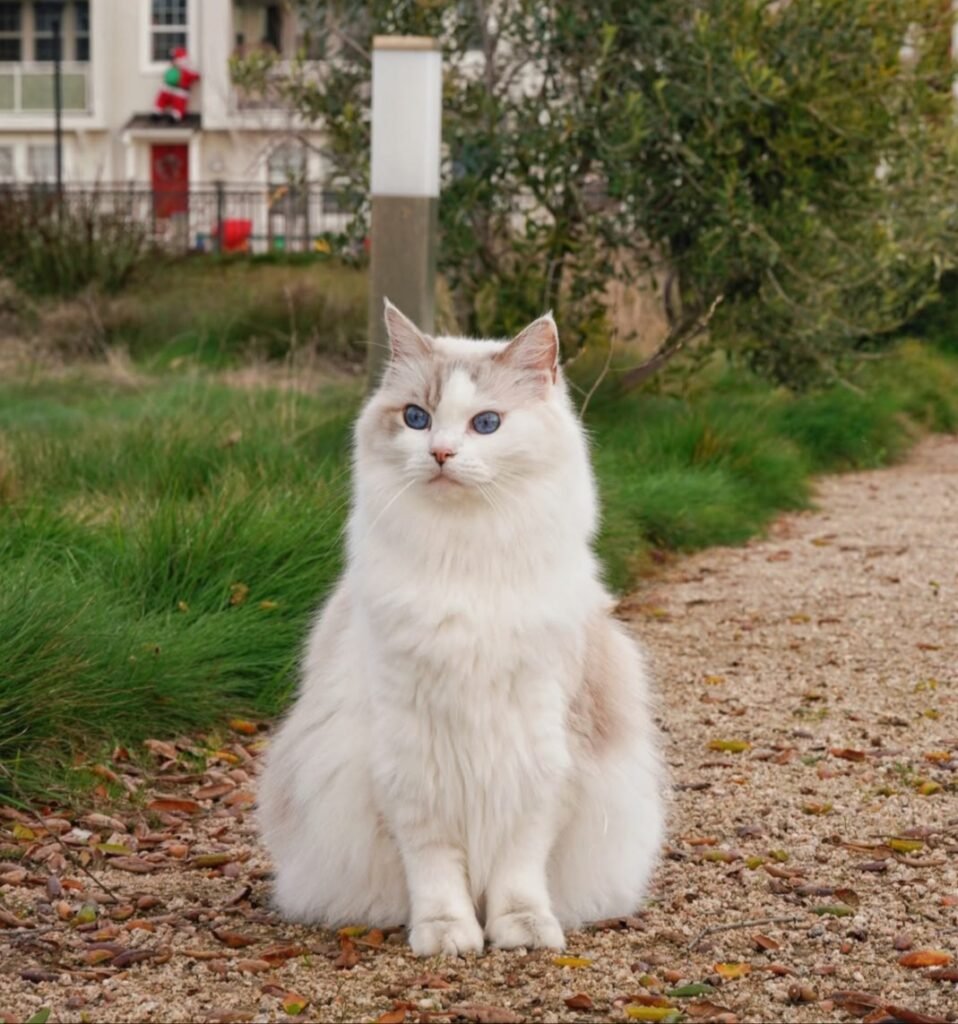
ORIGIN OF THE RAGDOLL
The Ragdoll cat breed is relatively new, first emerging in California in the 1960s. It all started in the house of Ann Baker who wanted to create a large breed of cat with long hair and a sweet personality. The Ragdoll cat breed was originally the result of mating between a white female named Josephine and various long-haired males of unknown ancestry that Ann Baker found in her neighbourhood. These selected cats had a characteristic Himalayan pattern. Birmans, Burmese and Persians were very early integrated into the breeding of this breed. Two lines were thus created: the light-type Ragdoll and the dark-type Ragdoll, about colour and patterns. All modern Ragdolls trace back to these two lines. The breed wasn’t officially registered until the 1990s, but its popularity quickly skyrocketed. It is now one of the most popular cat breeds
What is the personality of Ragdoll Cats?
The Ragdoll cat is sweet and affectionate. She is best known for her ability to relax her body, like a ragdoll. Don’t be surprised if your cat falls asleep on its back in your lap, paws stretched out in all directions. The Ragdoll has a gentle temperament and adores his family. She’s not particularly attention-seeking as long as she can stay by your side and come and go as she pleases. She enjoys watching your actions, moving around quietly, and affectionately rubbing her head against you. This behaviour is a sign of curiosity, affection, and trust. The Ragdoll is an easy-going cat breed, as they are very social and get along well with most humans and pets, such as birds and dogs. Generally, the Ragdoll cat is great with children and doesn’t mind playing with them all afternoon.
Size of a Ragdoll Cat Breed
The Ragdoll cat breed is a large cat that can look quite impressive with its long fur, especially in winter. Females usually weigh between 4 and 6 kg and males up to 9 kg. It can take several years for the Ragdoll to reach adult size, usually around the age of four. The Ragdoll has an imposing, muscular body, a powerful neckline, round, hairy feet and a bushy tail. It has a broad, triangular-shaped head with smooth lines, a slightly curved nose and medium-sized ears, the tips of which are rounded.
what colour is a ragdoll cat?
There are three patterns in the Ragdoll cat: mitted (or gloved), two-tone and colourpoint. Colourpoint cats have no trace of white, unlike mitted and bicolour cats. The Ragdoll is one of the few cat breeds for which white is allowed in combination with the mitted pattern. It has light blue eyes, a light-coloured body, and a darker face, ears, legs, and tail. The face of a Ragdoll may be darker overall or have a white-coloured Himalayan pattern around the nose and mouth.
Ragdoll Maintenance
The fur of the Ragdoll cat is long and with little undercoat. It needs to be combed once a week, all year round, to avoid the formation of fluff that could turn into harmful knots. Be sure to comb your cat carefully around its belly and paws.
Characteristics of the Ragdoll Cat
Ragdoll cat is known for having a soft and flexible body that she manages to relax. She can sleep in probably any position as if she had no bones. However, this does not mean that the Ragdoll cat does not feel pain or that you can hold it as you want. It must be supported firmly and with both hands when carrying it, otherwise it may injure itself.
Hereditary diseases of the Ragdoll cat
Ragdolls are generally healthy cats, but like many purebred cats, they can carry inherited diseases, such as hypertrophic cardiomyopathy (HCM), the most common form of heart disease in cats. This disease is characterized by thickening of the heart muscle and can be detected by echocardiography.
How to feed a Ragdoll?
The Ragdoll cat is fairly large, but it should not be given large amounts of food. The Ragdoll cat does not need a special diet. You can feed him dry or wet, healthy and nutritious food.
Interesting Facts About The Ragdoll Cat
-The Ragdoll can relax completely as if it had no bones
-This breed is relatively new, originating in California during the 1960s.
-The Official Book of Feline Origins recorded 76 Ragdolls in 2003, with registrations increasing to over 2,700 by 2019.
-Ragdolls have long fur that easily tangles. In addition to needing plenty of affection, they also require daily care.